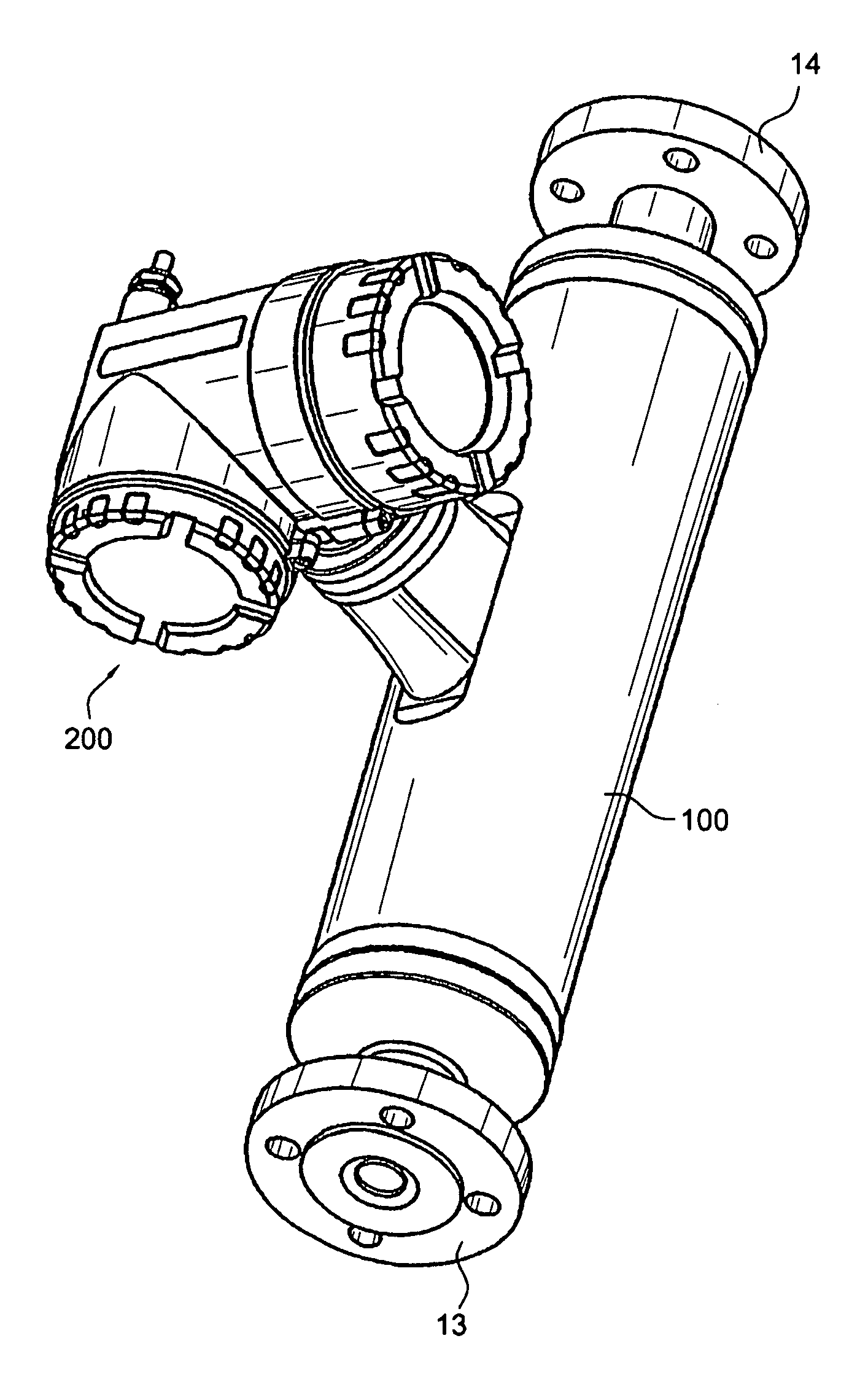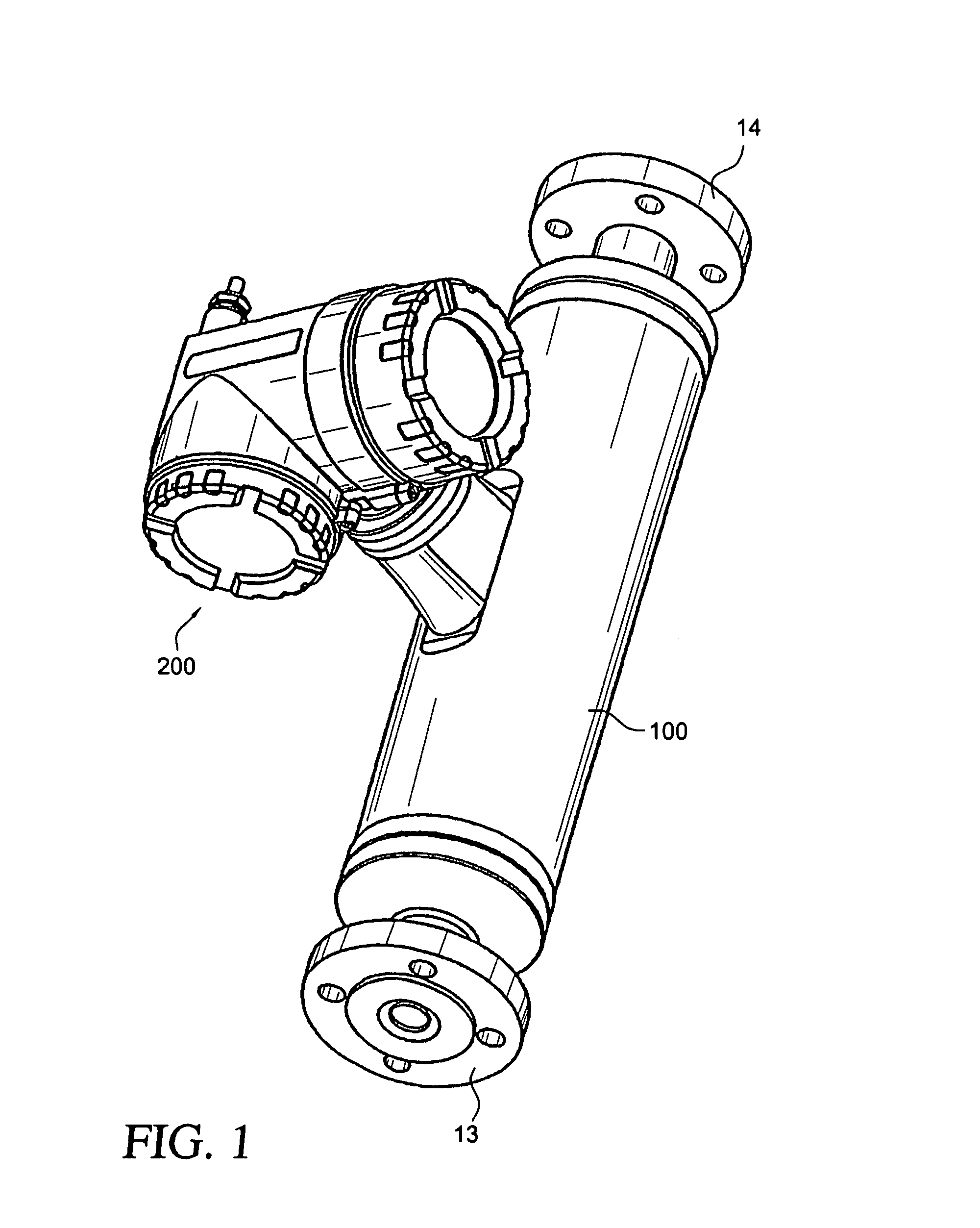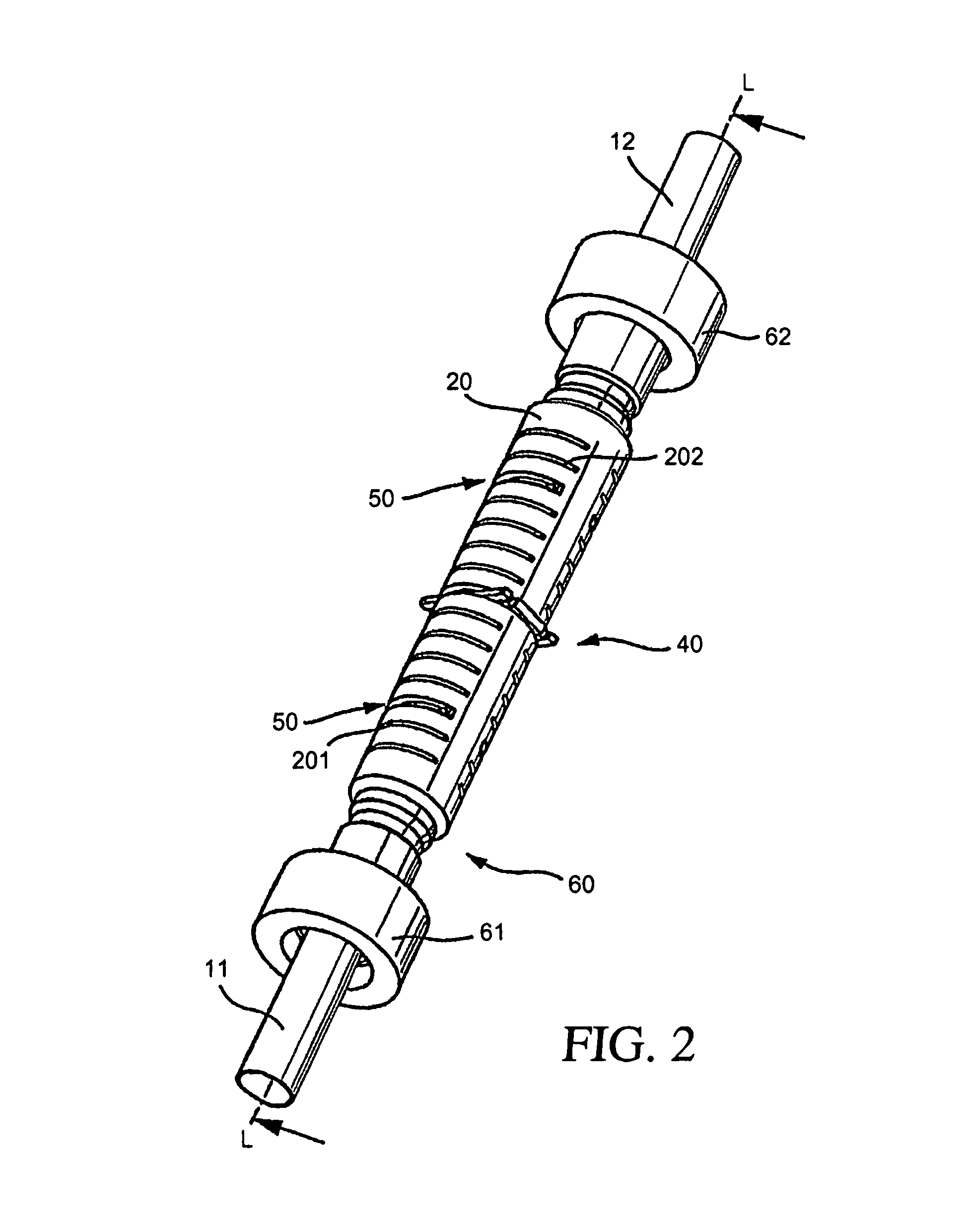In-line measuring device
a technology of in-line measuring and measuring device, which is applied in the direction of direct mass flowmeter, liquid/fluent solid measurement, volume measurement, etc., can solve the problems of considerable effort for the startup of measurement pickup, the firmware stored and executed in the digital measurement circuit is correspondingly complex, and the area of measurement value production is required to make significant changes
- Summary
- Abstract
- Description
- Claims
- Application Information
AI Technical Summary
Benefits of technology
Problems solved by technology
Method used
Image
Examples
Embodiment Construction
[0050]FIG. 1 shows, perspectively, an inline measuring device 1 suited for registering a physical, measured quantity, e.g. a mass flow rate m, a density ρ and / or a viscosity η, of a medium flowing in a pipeline (not shown) and for imaging this measured quantity in an instantaneously representing, measured value XX. The medium in this instance can be practically any flowable substance, for example a liquid, a gas, a vapor, or the like.
[0051]The inline measuring device 1, for example provided in the form of a Coriolis mass flow, density and / or viscosity meter, includes therefor a vibratory measurement pickup 10 flowed-through by the medium to be measured, an example of an embodiment and developments being shown in FIGS. 2 to 6, together with a measuring device electronics 50, as illustrated schematically in FIGS. 2 and 7. Preferably, the measuring device electronics 50 is, additionally, so designed that it can, during operation of the inline measuring device 1, exchange measurement an...
PUM
 Login to View More
Login to View More Abstract
Description
Claims
Application Information
 Login to View More
Login to View More - R&D
- Intellectual Property
- Life Sciences
- Materials
- Tech Scout
- Unparalleled Data Quality
- Higher Quality Content
- 60% Fewer Hallucinations
Browse by: Latest US Patents, China's latest patents, Technical Efficacy Thesaurus, Application Domain, Technology Topic, Popular Technical Reports.
© 2025 PatSnap. All rights reserved.Legal|Privacy policy|Modern Slavery Act Transparency Statement|Sitemap|About US| Contact US: help@patsnap.com



